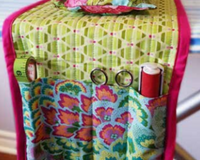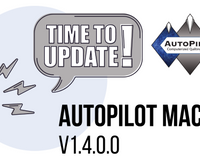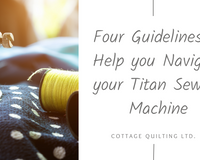When it comes to sewing, the thread you choose can make a big difference in the outcome of your project. There are various types of threads available, but the most common one used is the regular sewing thread. However, did you know that you can also use embroidery thread for regular sewing?
What is Embroidery Thread?
Embroidery thread, also known as needlework thread, is a type of thread that is commonly used for decorative stitching and embroidery. It is made from various materials such as cotton, polyester, nylon, or rayon. Unlike regular sewing thread, embroidery thread has a 2-ply construction, which means it is less twisted and has a flat texture.
At Cottage Quilting, we use Glide Polyester thread for free motion quilting, edge to edge quilting, applique and embroidery. We find our Glide thread has a slight sheen to it and lays nicely on top of cotton fabrics.
Can You Use Embroidery Thread for Regular Sewing?
Yes, you can definitely use embroidery thread for regular sewing. In fact, it can be a good substitute for sewing thread in certain situations. Embroidery thread is less expensive compared to regular sewing thread, making it a budget-friendly option. Additionally, it can go in and out of any fabric easily due to its flat texture.
When you're apart of our Thread of the Month Club, you can save up to 40% off thread prices on a regular basis!
When to Use Embroidery Thread for Regular Sewing?
There are a few instances where using embroidery thread for regular sewing can be beneficial. For example, if you are working on a project that requires decorative stitching or embroidery, using embroidery thread can add a unique touch to your design. We often use our embroidery thread for applique projects and edge to edge quilting with our longarm as well.
However, it's important to note that some embroidery thread may not be as strong as regular sewing thread. For instance, embroidery rayon threads made from rayon fibers are weaker compared to regular sewing threads. They tend to break when they get wet. Therefore, if you are sewing garments that will be exposed to moisture or outdoor elements, it's best to stick with regular sewing thread or a polyester thread for added durability.
Conclusion
Understanding the different types of threads available for sewing is essential for achieving the best results in your projects. While regular sewing thread is the most commonly used, embroidery thread can be a great alternative in certain situations. Whether you're adding decorative stitching or working on lightweight projects, embroidery thread can provide the versatility and unique texture you need. Just remember to consider the strength and durability requirements of your project before making a final decision. Happy sewing!






